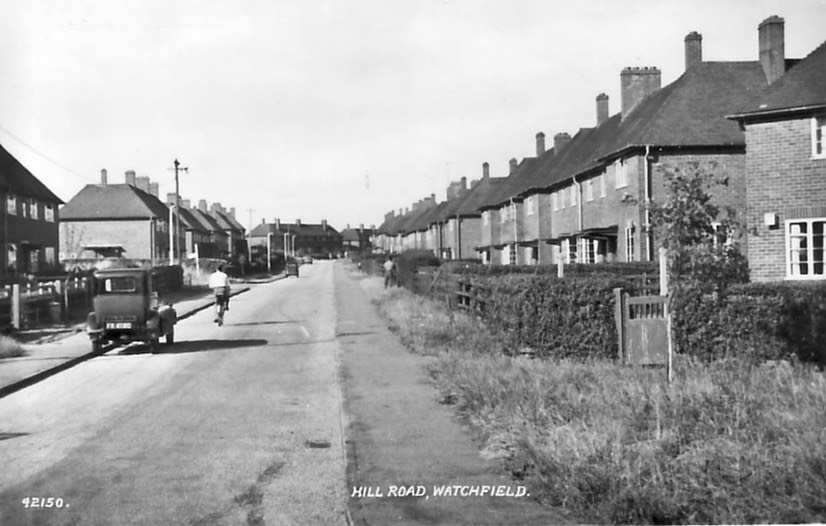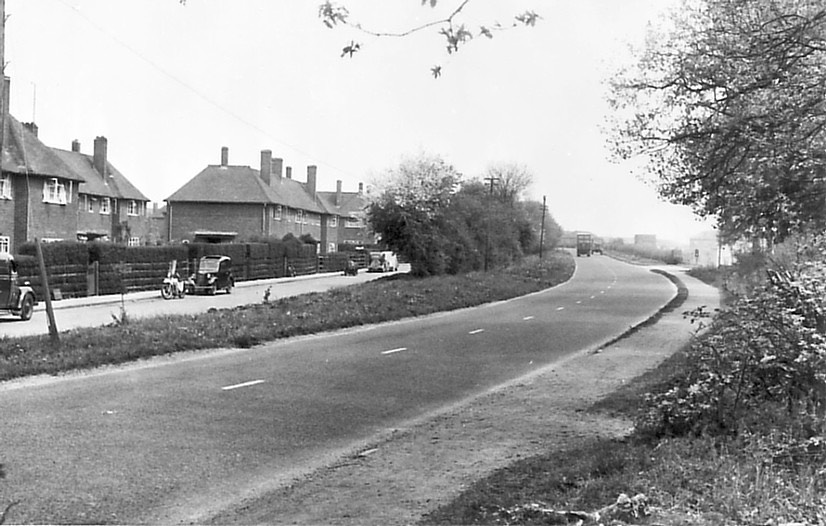It is true to say that if all things connected with the military were removed from within the Watchfield Parish Boundary, it would revert back to what it was for centuries previously, a tiny village. All those properties built East of the High Street extending right up to the Faringdon road, were, and mostly still are, living quarters for military personnel. Across the Faringdon road to the South, almost all this former Barrington Estate land is occupied by military buildings. Therefore, as a substantial part of the college lies within the Parish of Watchfield, even though it is labelled as ‘Shrivenham,’ it necessarily follows that it is included in our history.
In 1936, one of the reasons the War Office favoured purchasing the Barrington Estate was the unusual lack of cloud cover enjoyed by the area. It’s a puzzling claim and one that I suspect was more to do with politics than meteorology. The reason cloudless skies was required was that they needed somewhere to house and train two Anti Aircraft Artillery Regiments. The two buildings that were to administer the regiments were the first to be built and were called ‘Watson’ and ‘Borgard’ later to become Roberts and Kitchener Halls. To house the troops, the building of the married quarters also commenced at the same time with the formation of Hill Road, Short Street, South and North Streets, Axis Road and Wellington Square. The much larger houses near Beckett House, such as Lake Road, were the officers quarters.
By the time the two regiments had moved in, the war with Germany had already been declared and later in 1939 the site became a vehicle collection centre for the war effort. As the conflict progressed the Americans entered the arena and a large presence of American Infantry became stationed at Watchfield. There was also a Prisoner of War Camp for captured Germans which was the traditional square shape with the four guard towers on each corner. Its location was where the old guard room stands just west of the present day entrance roundabout. (Grid ref SU9045 2525). Mrs Maureen Coyle remembers that many of the Prisoners were employed keeping the local roads clear. She also recalls that during one Christmas, families living in the army quarters were permitted to entertain two prisoners and that some of them made beautiful wooden toys for the children.
Just after the end of the war, the Military College of Science moved from the Red Barracks at Woolwich to Watchfield. It did not attain its Royal status until 1953 with the accession of Queen Elizabeth to the throne. Over these years the College trained thousands of military personnel in the various arts and sciences of warfare. Much research was carried out on weapons and the firing ranges were, and still are, always busy. I grew up listening to the fire of single and automatic gunfire, so much so, that after a while I just didn’t notice it.
During the 1950s the College went from strength the strength and such was the demand for its services that it opened its own cinema to help entertain the growing number of personnel. It opened amid much acclaim in 1956 and Picture 86 is a scan of the original brochure. I remember going to the Bromhead for years, during which time it screened all the latest films that were currently being shown in high street cinemas around the country. Its location was just inside the college grounds on the right, through the old entrance opposite Wellington Square and by the military chapel. (Grid Ref: 9010-2505).
Picture 86. The opening film was aptly, 'The Battle of the River Plate.'

Picture 87. Some of the old military buildings and the new
In 1964 the RMCS received a visit from the Queen Mother amid much pomp and splendour. The subsequent literature marking the event noted that during that year some 3000 visitors came to the college. On Graduation Day in 1971, the Duke of Edinburgh visited and presented the first Degree Diplomas to be awarded to students under the sponsorship of the Council for National Academic Awards. His visit also marked the 25th anniversary of the establishment of the college at Watchfield.
Since 1984 to the present day, it has been known as the Defence College of Management and Technology. I believe its activities cover the same content that it has done over the decades. Students from all over the world are still trained there, some from eminent backgrounds judging by the quality of the helicopters that ferry them in and out. Graduation Day is still a big event with the Red Arrows often giving breathtaking displays overhead.


Pictures 88 & 89. The military housing that was to double the size of Watchfield. Top. Hill Road in 1950. Lower. The road to Faringdon running past Wellington Square in 1955. The Bromhead Cinema was accessed by the turning on the right.
Both pictures Courtesy of Paul Williams.